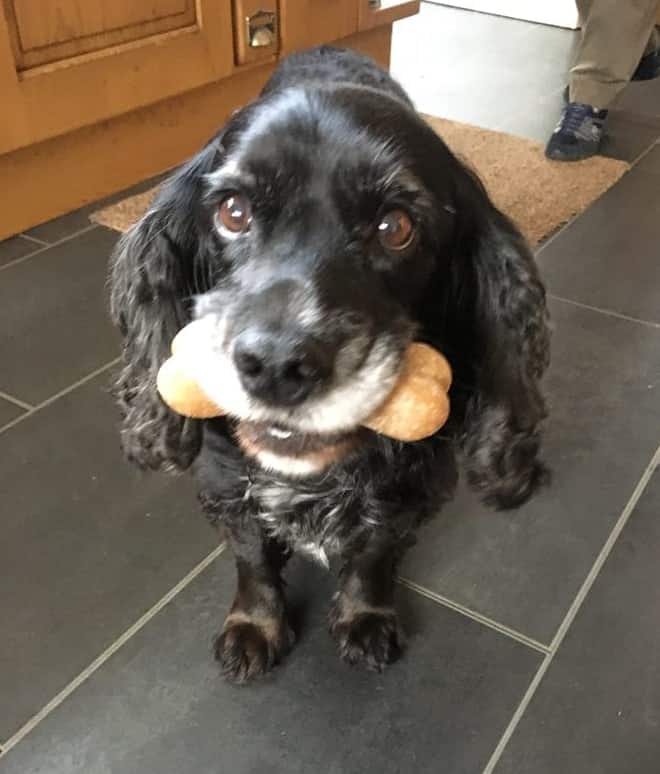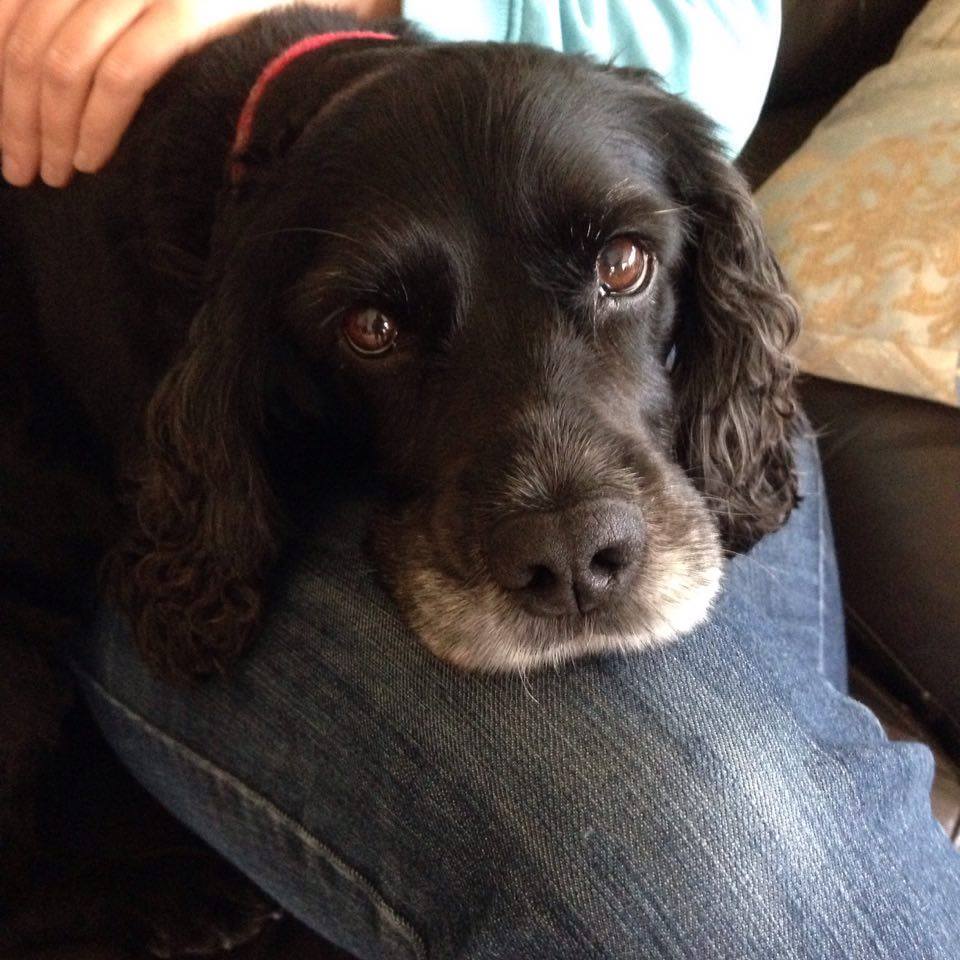A hard-working, hardy little dog with exuberance and character
The Working Cocker Spaniel is one of 2 types of English Cocker Spaniel. The Working Cocker Spaniel is so called because it has been bred to be a working dog, keeping the traits and hunting skills that were developed over hundreds of years. The other type of English Cocker Spaniel was bred to conform closely to Dog Show standards, to be shown in the ring. These are the Cocker Spaniels that most people have as household pets.
The Cocker Spaniel was used at first to flush or “spring” Woodcock birds, then later to retrieve game such as ducks, pheasants and hares. They are hardy and strong, capable of carrying game animals bigger than you would think from the size of the dog.

Working Cocker Spaniel – Temperament
This is a dog breed that keeps going and going, with seemingly endless energy and stamina. As little as 30 to 40 years ago, they had a reputation for being headstrong and difficult to train. But careful breeding programs Mostly in Wales, U.K.) have produced a more trainable and calmer breed.
Cocker Spaniels are sensitive dogs, and are easily intimidated. They have a soft personality, and will welcome strangers into the house with a wagging tail and excitement.
This exuberance means that they tend to be relatively frequent barkers, and they can become edgy, making them not ideal if you have close neighbors in an apartment block. This breed tends to prefer being outdoors in open spaces, and they don’t really like being in a city with hundreds of people around them.
They don’t like being left alone, and may suffer separation anxiety if they are alone for long periods. If you have to leave a Working Cocker alone, you should consider getting a dog sitter, to provide company and to take the dog out for walks. As a working breed, the Working Cocker Spaniel needs daily exercise to burn off its energy.
They would be happy playing fetch in a big backyard, if it is fenced. If you take your dog out for a walk, you should keep it on the leash, as they will tend to chase any small animals they see.
This breed’s friendly nature makes them an ideal pet for people of any age, although younger children must be taught to respect the dog and not tease it, and not play roughly. That said, they get on well with children and other dogs.
Working Cockers can be found working as service dogs or therapy dogs.

Working Cocker Spaniel – Breed History
The history of spaniel-type dogs goes back almost 500 years. They are thought to have originated in Spain, which is where their name comes from. They were bred and developed principally in England. At that time the only spaniel types were land spaniels and water spaniels.
Until the early 20th century, the term “spaniel” was used for Spanish dogs who could be used to hunt and flush a variety of game birds.
The smaller dogs were called “cockers” and were used to hunt woodcock. Larger dogs from the same litter were called “springers” as they flushed or “sprang” birds from cover.
Eventually, as breeders developed lines of either cockers or springers, the two separate breeds were developed – the cocker spaniel and the springer spaniel.
The dog was most likely used to assist hunters during this time, scaring small game out into the open. Once flushed out, these small game animals were an easy target for the hunter.
In the late 1800s, Cocker Spaniels made their first appearance in the US. They were popular among hunters, but were much more recognized as show dogs.
Americans favored these smaller Spaniels more as domestic pets than hunting dogs. This was the beginning of the distinctions between the English and American Cocker Spaniels, as Americans continued to develop their own Cocker Spaniels, as did the British.

Vital Statistics;
Height; 15″ to 16″
Weight’ 30 lbs
Lifespan; 10 to 14 years
Colors;
many, although predominantly Black, Black and White, with elements of Tan, Liver, Roan and Sable.
Ease of Training
These dogs are not difficult to train, but must be handled in a kind and sympathetic manner. They are easily intimidated, and a frightened dog will not understand what you are trying to teach nor remember the lesson well.
It’s always best to start with puppy training classes, which also helps to socialize the dog to new sights, sounds, smells, people and of course other dogs.
Once the dog is house trained and understands basic commands, it is well worth getting some one-on-one dog training with a professional trainer. They will improve your dog’s behavior, resulting in a happier owner and therefore a happier dog!

Grooming
A Working Cocker Spaniel will take up a fair amount of your time with grooming. The long, wavy coat needs daily brushing to prevent tangles from building up. These dogs seem to pick up dirt, grass and brambles if they are outdoors a lot.
Some owners will take their dog to a professional groomer who may trim the coat to make it shorter and easier to manage. With a well-groomed coat, bathing should only be needed occasionally, when the dog gets very dirty or develops a strong doggy smell.
The long ears should be checked every week at least, for signs of injury or infection such as redness, swelling or a bad smell.
The teeth should be brushed every day with a soft, small toothbrush and a dog-specific toothpaste, NOT a human toothpaste.
Protection
If you are looking for some extra protection at home, this is NOT the breed for you. Cocker Spaniels are usually very friendly but rather timid, and simply don’t have the attitude to try to scare off a stranger.
They are also too small and light to offer anything in the way of intimidation. At the most, they will bark a lot if they think something odd or interesting is going on. Therefore, they may make decent watch dogs, but are very unlikely to offer much protection.

Health Considerations
Working Cocker Spaniels are quite hardy and robust dogs, and do not have particular problems that some other breeds suffer from. However, like all dogs, they may develop a number of conditions. It’s always a good idea to get your dog from a reputable breeder, and to get the dog checked over by a vet.
Particular problems to watch out for include the following;
- Addison’s Disease
- Adult Onset Neuropathy
- Cancer
- Progressive Retinal Atrophy
- Hip Dysplasia
- Ear Problems
- Obesity
- Immune thrombocytopenia. This is an autoimmune disease that typically develops in adult dogs.
- Hypothyroidism
- Primary seborrhea
- Epilepsy
- Allergies
- AIHA (Autoimmune Hemolytic Anemia)
- Patellar Luxation



